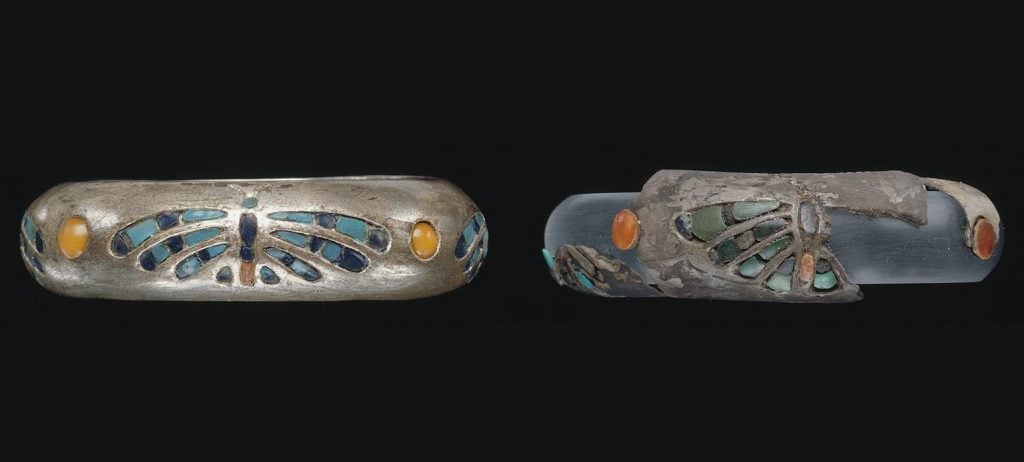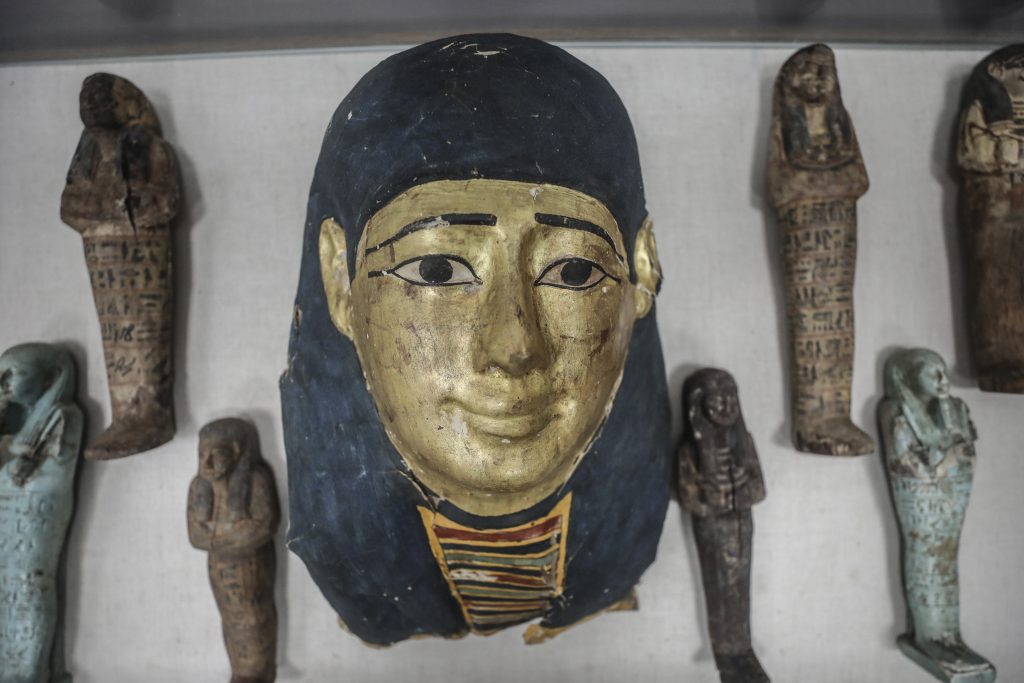Archaeology & History
An Egyptian Queen’s Bracelets Point to Ancient Trade Networks
The jewelry, inlaid with turquoise and lapis lazuli, belonged to Queen Hetepheres I.

The jewelry, inlaid with turquoise and lapis lazuli, belonged to Queen Hetepheres I.

Tim Brinkhof

A study that looked at the bracelets of an ancient Egyptian queen has unearthed new information about the desert kingdom’s early trade relations and metallurgy.
The bracelets in question belonged to Hetepheres I, whose underground tomb is located near the Great Pyramid of Giza. Hetepheres, who lived around 2,600 B.C.E, was the wife of Sneferu, the mother of Khufu (the pharaoh who oversaw Giza’s construction) and the grandmother of various other Egyptian rulers.
Her bracelets, decorated with inlays of turquoise, carnelian, and lapis lazuli that resemble butterflies, are unique among Egyptian artifacts. Not only because they have managed to elude graverobbers, but also because they are made of silver, a material that otherwise does not show up in the region’s archeological record until the Middle Bronze Age, several centuries after Hetepheres’s death.
The study, headed by archeologist Karin Sowada of Macquarie University in Sydney, Australia, was published in the Journal of Archaeological Science in 2023. It examined the jewelry’s mineralogical composition in hope of learning how their rare material was treated and, perhaps, where in the world it originally came from.

Ancient Egyptian artifacts are on display at Imhotep Museum as the museum reopens in Saqqara district of Giza. Photo: Mohamed Elshahed/Anadolu via Getty Images.
X-ray images of a cross-section of one of the bracelet fragments revealed that the silver was “repeatedly annealed and cold-hammered,” a smithing technique where material is shaped without first heating it up. “In case of the bracelet fragment,” the study continues, “the metal would have been hammered to flatten it into a thin sheet.”
Meanwhile, isotope ratios indicate that the silver used in the bracelets may have come from the mines of Cyclades, an island group in the Aegean Sea, or possibly Lavrion, a town on the southern tip of the Greek mainland, and not (as had been suggested previously) from Anatolia in present-day Turkey.
The implication of this study reaches beyond metallurgy, with Sowada and her co-authors concluding that their new findings demonstrate “the potential geographical extent of commodity procurement networks utilized by the Egyptian state during the early Old Kingdom at the height of the Pyramid-building age.”